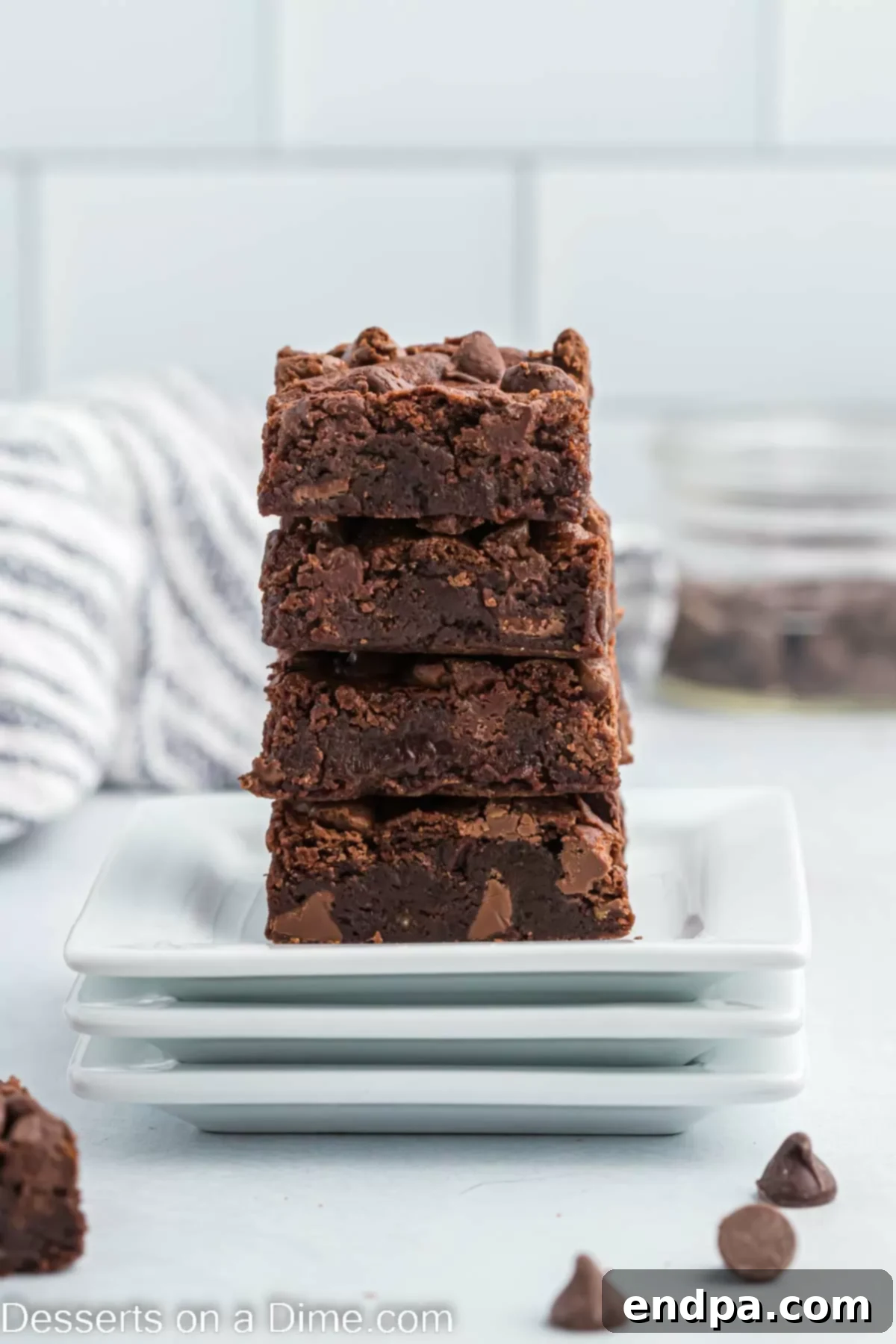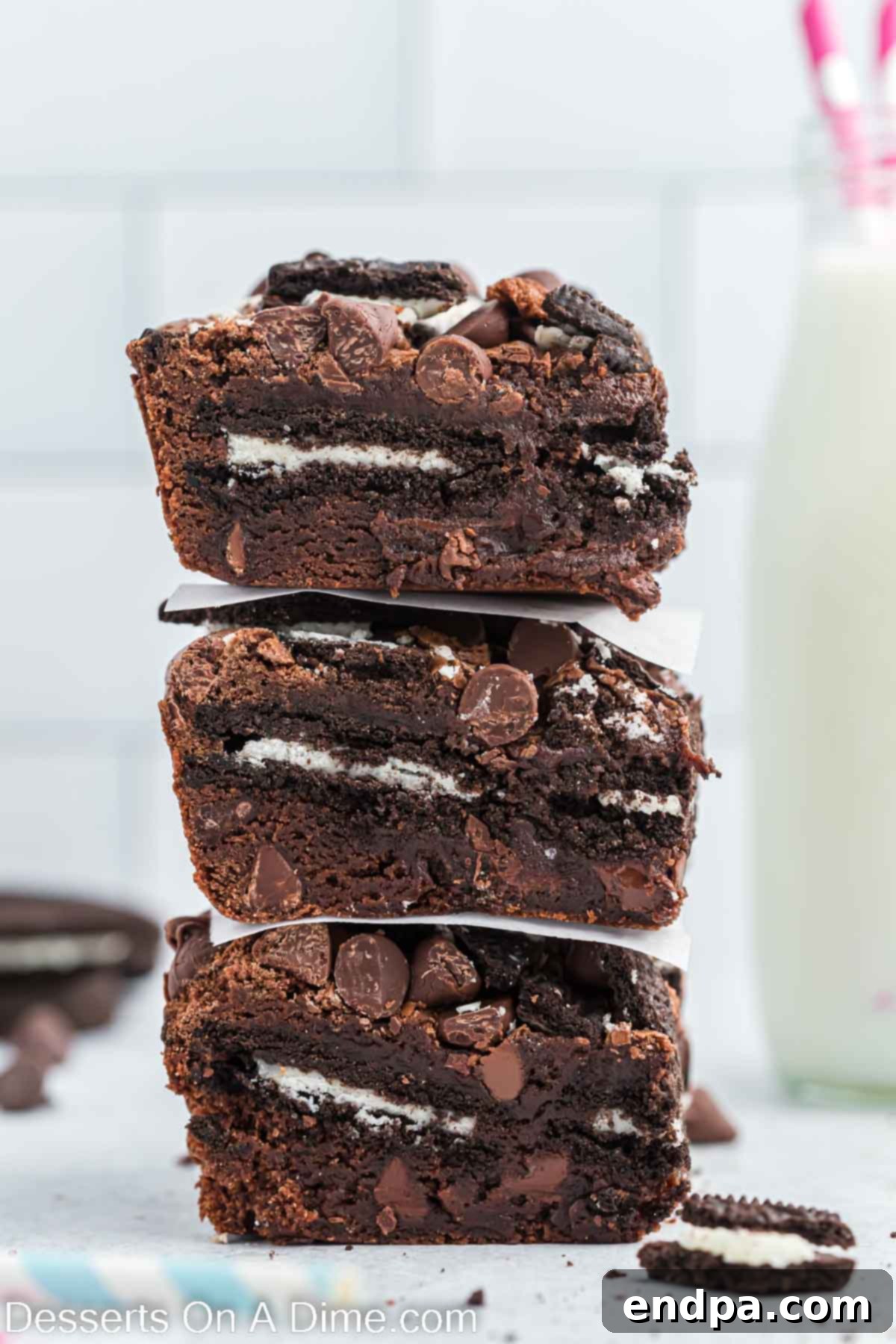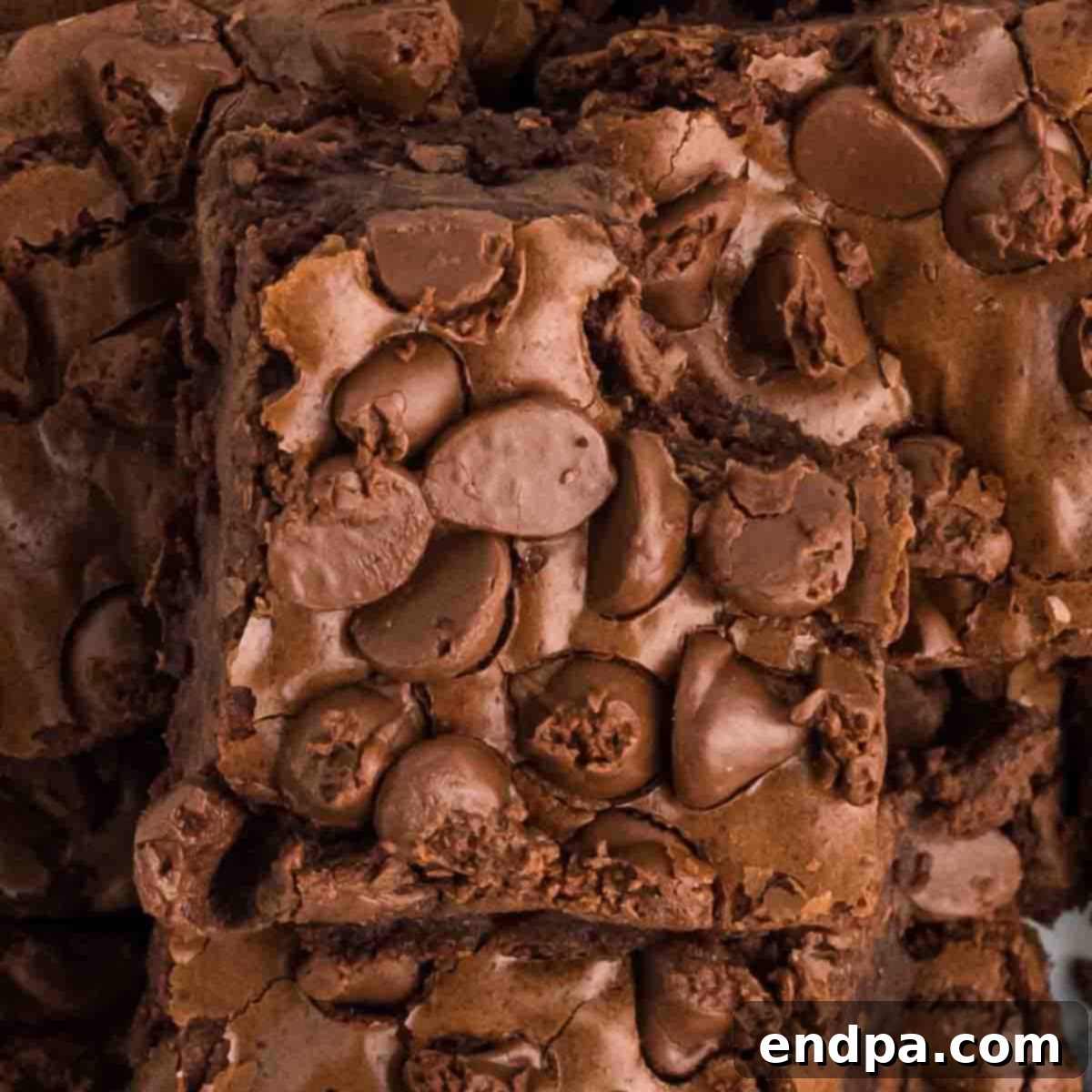Unlock the Secret to Perfect Brownies: A Comprehensive Guide to Knowing When They’re Done
Baking brownies can be one of life’s simplest pleasures, offering a delightful combination of rich chocolate flavor and a comforting texture. However, the ultimate challenge for any home baker lies in determining that precise moment when brownies are perfectly baked. Overbake them, and you’re left with dry, crumbly squares; underbake them, and you’re faced with a gooey, unset mess. This guide will equip you with all the essential tips and tricks to ensure your brownies, whether fudgy, chewy, or cakey, emerge from the oven flawlessly every single time.

Achieving brownie perfection isn’t just about following a recipe; it’s about understanding the subtle cues your brownies give you as they bake. From visual inspections to internal temperature checks, mastering these techniques will elevate your baking game, ensuring consistent, delicious results. Let’s dive into the foolproof methods for telling if your brownies are done, making underbaked or overbaked brownies a thing of the past.
Table of Contents
- How To Tell If Brownies Are Done: Essential Methods
- Understanding the 3 Main Types of Brownies
- How Long Do Brownies Really Need to Cook?
- Common Brownie Baking Mistakes to Avoid
- Tips for Achieving Perfect Brownies Every Time
- Delicious Brownie Recipes to Try
- Expand Your Baking Knowledge
How To Tell If Brownies Are Done: Essential Methods
Knowing when your brownies are perfectly baked is a skill that comes with practice, but also with a solid understanding of a few key indicators. Forget guesswork; these reliable methods will guide you to brownie success every time.
1. The Classic Toothpick Test: Your Go-To Indicator
The toothpick test is arguably the most famous and widely used method for checking doneness in baked goods, and brownies are no exception. To perform this test:
- Gently insert a clean toothpick, skewer, or even a thin knife into the very center of your pan of brownies.
- Carefully pull it out.
- What to look for: The ideal result for fudgy or chewy brownies is a toothpick that comes out with moist crumbs clinging to it, or a slight smear of chocolate, but absolutely no wet, raw batter. This indicates that the batter has set but is still wonderfully gooey inside.
- What to avoid: If the toothpick comes out completely clean, it means your brownies are likely overbaked and will result in a dry, cake-like texture, even if you were aiming for fudgy. If it comes out with wet batter, they need more time in the oven. For cakey brownies, a clean toothpick with just a few moist crumbs is generally desired.
Remember, the goal is not a completely clean toothpick for all brownie types. Embrace the moist crumbs!
2. The Reliable Thermometer Test: Precision in Baking
For those who prefer precision and want to eliminate all doubt, a digital food thermometer is an invaluable tool. It offers an objective way to determine doneness, especially crucial for achieving specific textures like ultra-fudgy.
- Insert the probe of a digital thermometer into the center of the brownie pan.
- Safe Eating Temperature: Brownies are generally safe to eat once they reach an internal temperature of at least 136°F (58°C). However, simply “safe to eat” doesn’t necessarily mean perfectly textured.
- Ideal Temperatures for Texture:
- Fudgy Brownies: Aim for an internal temperature between 165°F (74°C) and 170°F (77°C). This range ensures the brownies are set yet retain their characteristic dense, moist, and gooey center.
- Chewy Brownies: These typically benefit from a slightly higher temperature, often between 170°F (77°C) and 180°F (82°C). This allows for a firmer, chewier crumb without becoming dry.
- Cakey Brownies: For a true cake-like texture that springs back, the internal temperature should reach around 200°F (93°C) to 210°F (99°C). At this temperature, the batter is fully set and firm.
Using a thermometer eliminates the guesswork and allows you to consistently hit your desired brownie texture.
3. Observing the Edges: A Clear Visual Cue
The edges of your brownies offer an excellent visual indication of doneness. As brownies bake and set, the batter undergoes a structural change that is visible along the perimeter of the pan.
- What to look for: Observe the edges where the brownies meet the pan. Perfectly baked brownies will begin to subtly pull away from the sides. You’ll notice a tiny gap forming between the brownie and the pan.
- Texture Change: The edges will also appear more set and drier than the center. They will transition from a soft, raw batter look to a firmer, cooked texture.
This “pulling away” is a strong sign that the brownie structure is sufficiently stable, indicating doneness.
4. Checking the Top Surface and Overall Texture
The appearance and feel of the brownie’s top surface can also provide valuable clues.
- Shiny vs. Dull Top: Many brownie recipes develop a thin, crinkly, slightly shiny crust on top. If the top still appears wet and extremely shiny, like raw batter, it likely needs more time. As it bakes, this sheen will become more set, forming that desirable thin crust.
- Gentle Touch Test: For a cakey brownie, gently tap the center. It should feel set and spring back slightly, much like a cake. For fudgy or chewy brownies, the center will still feel somewhat soft and yielding, but not liquid or jiggly. It should feel like a dense, moist solid, not a raw liquid. If the entire pan is still wobbling excessively, it’s not ready.
Understanding the 3 Main Types of Brownies
Brownies aren’t a one-size-fits-all dessert. They come in a spectrum of textures, and understanding these differences is crucial for determining doneness specific to your desired outcome.
- Cakey Brownies: Light and Fluffy
- Description: These brownies have a texture reminiscent of dense chocolate cake. They are typically lighter, airier, and less dense than their fudgy counterparts. Often, they contain more flour and less fat.
- Doneness Indicators:
- Toothpick Test: A toothpick inserted into the center should come out clean or with only a few dry crumbs.
- Touch Test: The center should spring back when lightly tapped.
- Internal Temperature: Ideally between 200°F (93°C) and 210°F (99°C).
- Edges: Will be distinctly set and pulling away from the pan.
- Chewy Brownies: Dense and Satisfying
- Description: Chewy brownies offer a delightful bite, often characterized by a dense, slightly elastic crumb that holds together well. They strike a balance between fudgy and cakey.
- Doneness Indicators:
- Toothpick Test: The toothpick should come out with moist crumbs, perhaps a very slight smear, but no wet batter. A completely clean toothpick means they might be too dry.
- Internal Temperature: Aim for 170°F (77°C) to 180°F (82°C).
- Edges: Should be firm and pulling away from the pan, but the center will still feel somewhat soft.
- Top: Often develops a slight crinkly crust.
- Fudgy Brownies: Rich, Moist, and Gooey
- Description: The Holy Grail for many chocolate lovers, fudgy brownies are dense, intensely moist, and have a rich, melt-in-your-mouth texture. They typically have a higher fat-to-flour ratio.
- Doneness Indicators:
- Toothpick Test: This is where the “moist crumbs or smear” rule truly applies. A toothpick should emerge with substantial moist crumbs and possibly a slight, glossy smear of chocolate, but no liquid batter.
- Internal Temperature: The sweet spot is 165°F (74°C) to 170°F (77°C). Pulling them out at this temperature ensures they remain wonderfully gooey after cooling.
- Edges: Will pull away from the pan, but the center will still look quite soft and slightly unset. It might even have a slight “jiggle” when you gently shake the pan.
- Top: Often features a beautiful, thin, shiny, crinkly crust.
Remember, the goal for fudgy brownies is to take them out when they still seem slightly underdone in the center. They will continue to cook and set as they cool.
How Long Do Brownies Really Need to Cook?
While most recipes provide a suggested baking time (typically between 25 to 35 minutes), this should always be treated as a guideline, not a strict rule. Several factors can influence the actual baking time required:
- Recipe Variation: Different recipes, even for the same type of brownie, can have vastly different ingredient ratios, affecting how quickly they cook.
- Type of Brownie: Fudgy brownies might bake quicker or be pulled out earlier than cakey ones, as their target internal temperature is lower.
- Oven Calibration: Ovens are notorious for varying in temperature. Your oven might run hotter or cooler than the set temperature, significantly impacting baking time. An oven thermometer is a smart investment.
- Pan Material and Size: Darker metal pans conduct heat more efficiently and can cause brownies to bake faster and brown more. Glass or ceramic pans might require a slightly longer baking time. A larger or smaller pan than specified will also alter baking duration.
- Ingredient Temperature: Room temperature ingredients often result in more even baking compared to cold ones.
- Altitude: High-altitude baking requires adjustments to recipes and can affect baking times.
Always rely on the doneness indicators discussed above rather than solely on the clock. Start checking your brownies a few minutes before the recipe’s minimum suggested time to avoid overbaking.

Common Brownie Baking Mistakes to Avoid
Even with the best intentions, it’s easy to fall prey to common baking errors. Sidestep these pitfalls for superior brownies:
- Overbaking: The most common culprit behind dry, crumbly brownies. Always err on the side of slightly underbaked for fudgy or chewy varieties.
- Underbaking: While a slightly gooey center is desirable, a truly underbaked brownie will be liquid in the middle and taste raw. This is where the thermometer or toothpick test is critical.
- Overmixing the Batter: Once you add flour, overmixing develops the gluten, leading to tough, dense brownies instead of tender ones. Mix just until combined.
- Not Lining the Pan: For easy removal and clean cuts, always line your baking pan with parchment paper, leaving an overhang on the sides.
- Cutting Too Soon: Patience is key! Brownies need to cool completely in the pan before cutting. Cutting them while warm will result in jagged edges and a messy texture.
- Ignoring Your Oven: Every oven is different. Get to know yours. Invest in an oven thermometer to ensure accuracy and adjust baking times accordingly.
Tips for Achieving Perfect Brownies Every Time
Beyond knowing when they’re done, these general baking tips will elevate your brownie game:
- Use High-Quality Ingredients: Good chocolate, fresh butter, and quality flour make a noticeable difference in flavor and texture.
- Measure Accurately: Baking is a science. Use a kitchen scale for dry ingredients if possible, and level off your measurements precisely.
- Room Temperature Ingredients: Butter and eggs at room temperature emulsify better, leading to a smoother batter and a more uniform bake.
- Preheat Your Oven Thoroughly: Always ensure your oven is fully preheated to the correct temperature before placing the brownies inside. This ensures consistent heat from the start.
- Don’t Peek Too Often: Opening the oven door frequently causes temperature fluctuations, which can affect the baking process and even cause brownies to sink.
- Cool Completely: As mentioned, allow your brownies to cool entirely in the pan on a wire rack. This allows them to set properly and enhances their texture. For extra fudgy brownies, chilling them in the fridge before cutting can also help achieve cleaner slices.
Delicious Brownie Recipes to Try
Now that you’re armed with the knowledge to bake perfect brownies, it’s time to put your skills to the test with some fantastic recipes:
- Classic Lunch Lady Brownies
- Effortless Cake Mix Brownies
- Irresistible Oreo Brownies Recipe
Expand Your Baking Knowledge
Continue your baking journey with these helpful guides and tips:
- Understanding Shelf Life: Does Cake Mix Go Bad?
- Mastering the Basics: Learn How to Make Homemade Brown Sugar
- Ingredient Swaps: Best Baking Soda Substitutes
- Versatile Alternatives: The Best Substitutes for Cornstarch
With these comprehensive tips and insights, you’re well on your way to baking a batch of brownies that are nothing short of spectacular. Experiment with different recipes and techniques, pay attention to the subtle cues, and soon you’ll be a brownie-baking expert! Which delightful brownie recipe will you conquer first? Share your baking adventures in the comments below!
